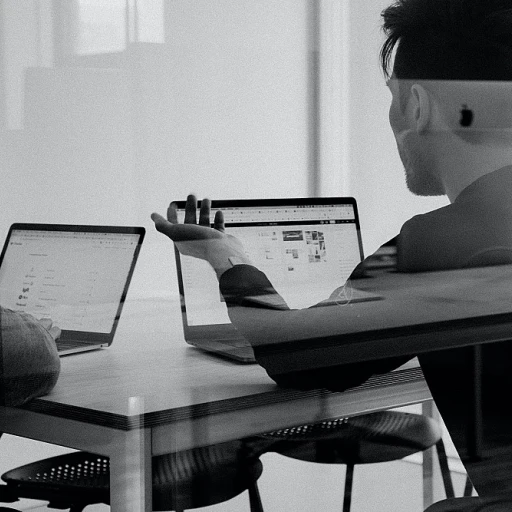
Understanding the Moon Landing Activity
Explore the Moon Landing Challenge
The moon landing activity is a well-regarded team building exercise designed to enhance various skills within remote teams. This challenging game, often referred to as the survival moon, immerses team members into a hypothetical scenario where they are stranded on the moon due to a mishap. The team must collaborate to solve problems and make critical decisions to reach a rendezvous point.
This exercise is largely inspired by the infamous NASA moon survival, whereby participants rank a list of items - like oxygen tanks and signal flares - that they might need to successfully survive and reach a mother ship. The priority is to emphasize debate, consensus building, and decision-making skills, while also encouraging individuals to consider expert rankings and apply their own critical thinking to navigate the challenge.
What makes the moon landing activity particularly impactful in remote work settings is its ability to bring teams together in a unique and engaging environment. While remote work can often silo team members, this activity pushes for coordinated efforts and team development, ultimately fostering stronger group dynamics and commitment. To delve deeper into the significance of understanding group dynamics in remote settings, consider exploring this in-depth resource that draws on servant leadership and its implications in fostering team cohesion. By engaging in this exercise, remote teams can significantly improve their problem-solving strategies, boost team morale, and strengthen individual roles within a group setting.
Benefits of Team Building in Remote Work
The Power of Team Building in Remote Work Environments
Team building has long been a staple for enhancing collaboration and communication among team members. In a remote work setting, its importance is even more pronounced as people work across different locations, often missing the spontaneous interactions of a traditional office. Leveraging team building activities, such as the moon landing exercise curated around a survival moon challenge, can significantly improve team cohesion.
Remote team building enhances critical thinking and problem-solving skills by urging teams, or moon teams in this context, to work towards a common objective. The premise of being stranded on the moon and needing to rank items for survival requires collective team decision making and leveraging individual strengths. Such exercises encourage creativity and adaptation, key skills that are valuable in today's dynamic remote work landscape.
The moon landing game often prompts team members to assess expert rankings versus their own, fostering an environment of discussion and growth. This development can contribute to better communication, one of the bedrocks of remote team success. Through structured exercises where the team has to evaluate and rank items crucial for reaching a mother ship, members learn to effectively express ideas, listen, and collaborate, leading to a more unified group.
In summary, remote work doesn't need to be a barrier to team development. Instead, it offers an opportunity to creatively engage with team building games and exercises that can bolster group dynamics and ultimately, productivity. To uncover more strategies on enhancing team cohesion in remote setups, exploring various techniques beyond the moon survival challenge can offer valuable insights.
Implementing the Moon Landing Activity Virtually
Adapting the Moon Survival Activity for Digital Spaces
Conducting the Moon Survival Activity in a virtual environment can present certain challenges, yet with the appropriate tools and strategies, teams can effectively engage in this collaborative exercise. Here are some steps to help you seamlessly implement this classic team-building game in your online workspace:- Select the Right Platform: Choose a reliable digital platform that supports file-sharing and video conferencing. Popular tools such as Zoom, Microsoft Teams, or Slack can be effective in hosting large group discussions and dividing participants into smaller breakout rooms for individual exercises.
- Prepare in Advance: Share the scenario details and a list of items with all team members before the meeting. This includes a list of NASA’s 'expert rankings' for comparison once the activity concludes. Make sure each participant understands the context—stranded moon, mother ship, survival challenge—and what the end goal is.
- Facilitating Collaboration: Use breakout rooms to simulate smaller groups or "moon teams." This encourages communication and decision-making, as team members must rank items collaboratively to maximize their chances of survival on this virtual moon expedition.
- Enhance Engagement with Interactive Tools: To further engage the team, incorporate interactive elements like digital whiteboards or shared documents for real-time problem solving and reflection on the activity. This aids in decision making and ensures that every team member contributes their thoughts.
- Debrief and Reflect: After the main exercise, bring all teams back together to discuss their rankings and the rationale behind their decisions. Encourage open dialogue about the group dynamics observed and any lessons learned about individual roles in team development. This step is critical for effective team building, as it allows space for reflection and identifying areas of improvement.
Challenges and Solutions in Remote Team Building
Overcoming Barriers in Remote Team Building
Remote team building presents its own set of challenges, primarily due to the lack of physical presence and spontaneous interactions that are often crucial for team cohesion. However, with mindful strategies, these hurdles can be effectively addressed.
One of the main obstacles in virtual team building, such as incorporating a Moon Landing Activity, is the potential disconnect among team members. Unlike in a physical classroom setting, team members might find it difficult to engage with building games when they're behind their screens. To mitigate this, it's crucial for facilitators to create an engaging virtual space where each individual feels included.
To facilitate this connection in the survival challenge, teams can be encouraged to use breakout rooms or group chats. Letting smaller groups of team members discuss and decide their approach to the moon landing problem solving helps in nurturing collaboration. In these rooms, each team can discuss how best to rank items or identify the best approach to reach the rendezvous point with the mother ship.
Technical difficulties and varying levels of tech proficiency among team members can further complicate virtual exercises. Providing a simple, easy-to-use platform to conduct the game, alongside clear instructions, can lessen tech-related stress. It's also helpful to have a tech support member on standby during the activity to assist anyone facing issues, ensuring that the exercise focuses on team development rather than technical troubleshooting.
Moreover, differences in time zones are a common challenge when aligning teams for virtual activities. Establishing a schedule that accommodates as many team members as possible is critical. It's important to plan team building activities at times that fit within the working hours of different regional team members.
Finally, when implementing Nasa inspired activities like the moon survival challenge, the emphasis should be on enhancing problem-solving and decision-making skills, fostering a sense of togetherness through shared team moon tasks. Regular feedback sessions post-activity allow team members to express their thoughts and suggest improvements, nurturing a culture of ongoing team development.
By acknowledging these challenges and actively seeking solutions, organizations can turn potential pitfalls into opportunities for team growth and enhanced critical thinking, ultimately fostering a robust remote working environment.
Measuring the Impact of Team Building Activities
Evaluating the Effectiveness of Cosmic Adventures
Measuring the impact of team building activities, such as the Moon Landing Activity, is crucial for understanding their value in enhancing remote team cohesion. As teams navigate through this survival challenge, they engage in a combination of critical thinking, problem solving, and decision making. To gauge the success of such activities, consider the following aspects:- Individual and Team Growth: Observe the development of team members in terms of collaboration and communication. Has the team improved in conveying ideas and reaching consensus during the exercise?
- Problem Solving Skills: Assess improvements in individual and collective problem solving capabilities. The ability to effectively rank items in terms of importance for NASA's moon survival scenario can indicate increased team competency.
- Decision Making Efficiency: Evaluate how quickly and accurately the team arrives at its decisions. The process of determining the best course of action to reach the rendezvous point or mother ship highlights team development.
- Feedback and Reflection: Collect feedback from all team members about their experience in the moon landing game and discuss any strategies or approaches that could enhance future exercises.
- Comparative Studies: Analyze how different groups performed in the same activity to identify effective methods and encourage best practices across teams.












